Mobihel Thinners and Additives
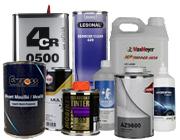
Mobihel professional paint thinners
-
 302047Clearcoat tinter050 Magenta 100ml
302047Clearcoat tinter050 Magenta 100ml -
 302048Clearcoat tinter051 Red pearl gloss 100ml
302048Clearcoat tinter051 Red pearl gloss 100ml -
 302050Clearcoat tinter053 Rose Red 100ml
302050Clearcoat tinter053 Rose Red 100ml -
 302051Clearcoat tinter054 Red 100ml
302051Clearcoat tinter054 Red 100ml -
 302052Clearcoat tinter055 Blue 100ml
302052Clearcoat tinter055 Blue 100ml -
 302053Clearcoat tinter056 Cyclamen red 100ml
302053Clearcoat tinter056 Cyclamen red 100ml -
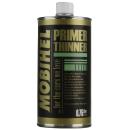 40758112Washprimer Thinner0.75L for washprimer
40758112Washprimer Thinner0.75L for washprimer -
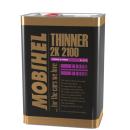 41672114Thinner 2K 21005L, Standard
41672114Thinner 2K 21005L, Standard -
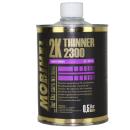 41672151Thinner 2K 21000.5L, standard
41672151Thinner 2K 21000.5L, standard -
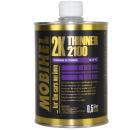 41672351Thinner 2K 23000.5L, Slow
41672351Thinner 2K 23000.5L, Slow -
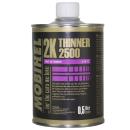 41672951Thinner 2K 25000.5L, Fast
41672951Thinner 2K 25000.5L, Fast -
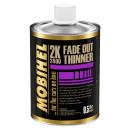 47017331Connecting Thinner2400 2K COV, 0.5L
47017331Connecting Thinner2400 2K COV, 0.5L -
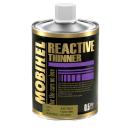 48078501Airdry Primer Reactive ThinnerAir drying 0.5L
48078501Airdry Primer Reactive ThinnerAir drying 0.5L -
 48158811Clearcoat tinter052 Brown 100ml
48158811Clearcoat tinter052 Brown 100ml
︾
Presentation of Mobihel paint thinners and bodywork additives:
Paint Thinners and Bodywork Additives play a crucial role in the automotive paint process, offering significant benefits for bodywork professionals and tuning enthusiasts alike. Here are just a few points highlighting the importance of these products:
Viscosity adjustment:
Paint Thinners are used to adjust the viscosity of the paint, making it easier to apply to the bodywork surface. Proper viscosity ensures an even coat and reduces the risk of problems such as drips or unevenness.
Easier application:
By making paint more fluid, Thinners make it easier to apply using a variety of tools such as pro paint spray guns, brushes or rollers. This improves the efficiency of the paint process.
Controlling drying time :
Some Paint Thinners can influence paint drying time. This allows professionals to better manage the process, by speeding up or slowing down the drying time according to specific needs.
Improving adhesion :
Bodywork additives are often used to improve the adhesion of paint to the metal surface of the bodywork. This contributes to a more durable, weather-resistant finish.
Corrosion protection :
Some additives offer additional protection against corrosion. This function is crucial to preserving the integrity of the bodywork, especially in harsh weather conditions.
Customised finish :
Some Additives allow you to personalise the finish, adjusting the gloss, texture or other aesthetic characteristics of the paint. This gives vehicle owners greater flexibility to achieve the look they want.
Reducing imperfections:
Additives can help minimise paint imperfections, such as spray lines, bubbles or finger marks, for a more professional finish.
Touch-up repair:
Paint thinners make it easier to touch up and repair small areas of damaged paint without compromising the consistency of the overall finish.
Optimise performance:
By using the right Thinners and Additives, bodywork professionals can optimise paint performance, ensuring efficient application and a high quality finish.
It is essential to follow the manufacturer's recommendations and use these products with care to maximise their benefits while avoiding potential problems. A thorough knowledge of specific products, application techniques and environmental conditions is crucial to achieving optimum results.
The different types of Paint Thinner offered by Mobihel :
The differences between a connector paint thinner, an air-dry primer reactive paint thinner and a washprimer paint thinner lie in their specific uses and the phases of the automotive painting process for which they are intended. Here's an explanation of each type of Thinner:
Splicer Paint Thinner :
Use : Splicer Paint Thinner is often used in the process of repairing touch-ups or splicing painted areas. It is designed to adjust the viscosity of the paint to ensure a smooth transition between the existing paint and the new coat, avoiding perceptible differences.
Application : This can be particularly useful for touch-up work on specific areas of the bodywork where a precise colour match is required.
Air-Dry Reactive Paint Thinner :
Use : Air-dry Reactive Primer Paint Thinner is generally used with air-dry primers. These primers are designed to cure at room temperature without the need for baking or additional catalysts.
Application : This Thinner is used to adjust the viscosity of the primer and facilitate its application to the bodywork surface. It is used to obtain the right consistency for uniform application.
Washprimer Paint Thinner :
Use : Thinner for washprimer paint is often associated with the use of washprimer, which is a primer containing rust conversion agents for treating metal surfaces.
Application : It is used to dilute washprimer to the appropriate consistency, allowing easy application to metal surfaces and promoting adhesion of the subsequent paint.
It is important to note that the specific formulations of these Thinners may vary between manufacturers, and it is recommended that you follow the instructions provided by the manufacturer to ensure correct use and optimum results. Respecting the recommended Mixing ratios, following the appropriate drying times and ensuring application under suitable conditions all contribute to a successful paint process.
All you need to know about using Thinner for bodywork paint :
What is the main function of a Thinner for body paint?
The main function of Thinner for body paint is to adjust the viscosity of the paint. By altering the consistency of the paint, it makes it easier to apply to the bodywork surface, contributing to a more uniform and professional finish.
How do I choose the right Thinner for my paintwork?
The choice of Thinner depends on the type of paint used. It's vital to consult the paint manufacturer's recommendations to determine the right Thinner. Factors such as the type of paint, climatic conditions and method of application influence the choice of the right Thinner.
What's the difference between a standard paint thinner and a Fast drying paint thinner?
Users may be curious to understand how Fast drying thinners differ from standard thinners and in what situations each type is most appropriate.
Can using too much Thinner Paint affect the quality of the paint?
This question looks at the potential risks of over-thinning paint and how to find the right balance between the necessary viscosity and over-thinning.
What are the benefits of using Additives in addition to Thinners for bodywork paint?
Users may wish to understand how additives, in combination with thinners, can improve paint quality and the durability of the finish.
Can paint thinners from different brands be mixed with a specific paint?
This question looks at the compatibility of different brands of Thinner and whether this is recommended or not.
How should paint Thinners be stored to avoid contamination problems?
Users may wonder about best practice for storing Thinners to maintain their effectiveness and avoid any risk of contamination.
Are there environmentally-friendly alternatives to conventional paint Thinners?
This question reflects a growing concern for environmental impact as users seek more environmentally friendly options for their paint projects.